 By Chris McCusker
By Chris McCusker
TLG Senior Consultant
We are all experiencing, and witnessing, heartfelt reactions to recent events in politics. Each day seems to be a new episode in a highly rated, binge-worthy, docudrama reality TV series. And this political drama has played out in the stressed-out context of COVID-19 and violent protests of racism in our streets. Layers of emotion and stress abound. Most of us are probably ready for a vacation. If a vacation is not possible, we are probably ready for at least a vacation from conflict.
But we should remember that conflict is neither good nor bad. What makes it so, is how we manage it. And also, we should remember that there is a lot of evidence to show that overall team performance depends on effective conflict management. Teams that create and manage conflict effectively will perform better. The goal of constructive conflict management is to create “win-win” agreements – those in which all sides are happy with the outcomes.
Conflict is “the appearance of difference,” and it is a necessary ingredient of team effectiveness. Conflict can help teams avoid bad decisions, expose faulty assumptions, and coordinate thinking. But in this time of high emotion and fatigue, let us remember some simple principles for creating win-win agreements in teams:
- Build rapport — Teams that make time to enjoy one another and relate positively in “non-work” ways will be more cooperative in response to conflict. Rapport — that positive emotional connection among us — situates us to collaborate and work together. Some ideas for building rapport include: Come 10 minutes early to the Zoom meeting so someone can share a favorite recipe. Share a favorite TV show. Organize a “lunch and learn” to talk about a good read. Share photos of family celebrations. Have a Zoom happy hour. Take turns. Connect!
- Inquiry before Advocacy — Win-win agreements start with inquiry. Asking questions and listening are the critical behaviors. Do this before getting to what members want or need (advocacy). Honestly sharing information will pay off when both sides are engaged in this approach.
- Start with areas of common ground — Find issues that matter to everyone on the team and for which there is already goal alignment. For example, brainstorm ideas for enhancing your customer experience. Share thoughts on what is happening in your industry or field. Analyze your competitors. Begin with issues that are important to all and generate new options or ways of addressing them.
- Prioritize — Nobody gets everything that they want on a team. But teams are formed based on expertise and roles. Know your company’s priorities. Set out to learn the priorities of others. Make packages and trades based on priorities.
- Focus on interests, not positions– In their classic book, Getting to Yes, Roger Fisher and William Ury distinguish between interests (underlying areas of concern) and positions (one party’s preferred solution to an interest). Most negotiations begin with a competitive fight about positions. For example, a husband might say, ‘I want to vacation in Las Vegas!” And his wife might prefer “to go to a nice beach in Mexico!” One approach to solving this conflict is to fight about Vegas v. Mexico. Another approach is to focus on interests and creatively generate options. The underlying interest for the husband is to play poker in a casino. The underlying interest for the wife is to enjoy the sun and fresh air of a beach. By focusing on interests, they can brainstorm to find a location (such as Miami or Biloxi) where there are both beaches and casinos.
If you are like me, you are experiencing “conflict fatigue” from recent events in society. But we should remember that how we respond to conflict is a choice. And if we choose a collaborative approach to conflict in our business teams, we walk away with win-win agreements. The principles described above should help us to create value from our differences!

 By Chris McCusker
By Chris McCusker
